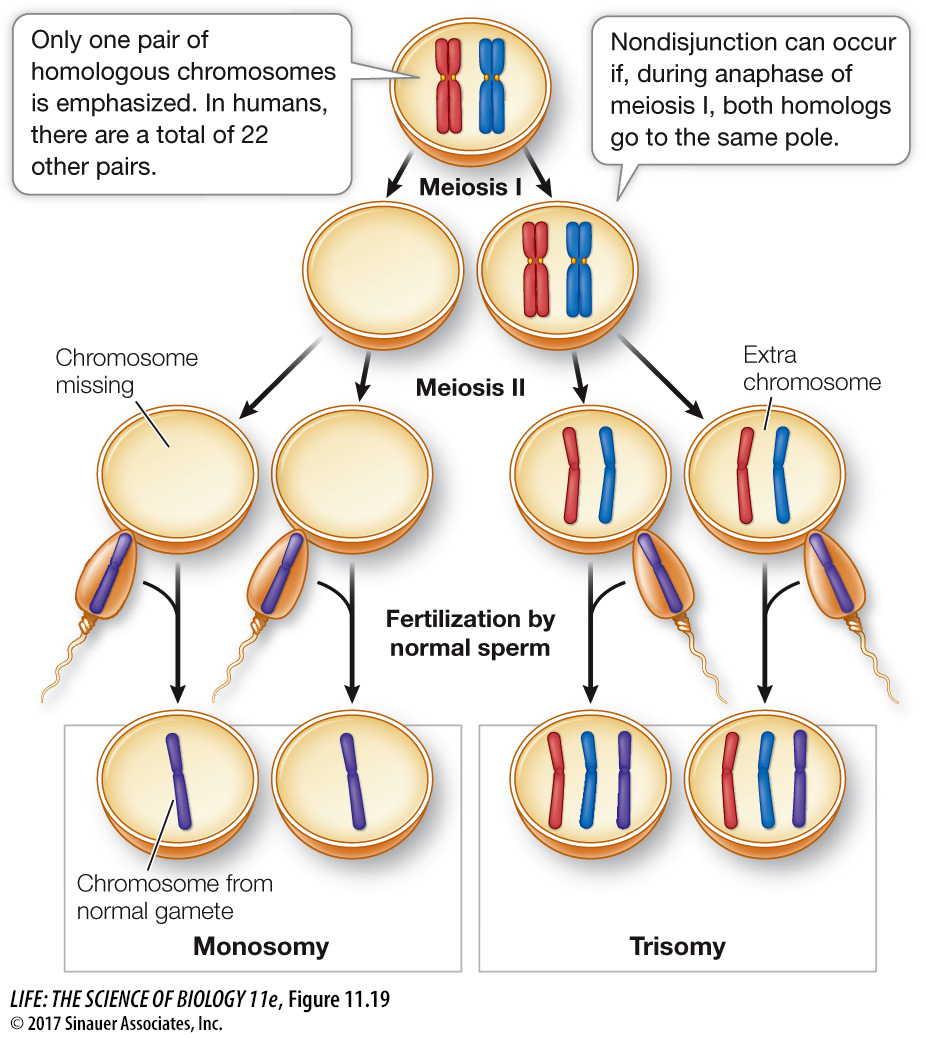Meiotic errors lead to abnormal chromosome structures and numbers
In the complex processes of mitosis and meiosis, things occasionally go wrong. In meiosis I, a pair of homologous chromosomes may fail to separate, and in mitosis or meiosis II, sister chromatids may fail to separate. Conversely, homologous chromosomes may fail to remain together during metaphase I of meiosis, and then both may migrate to the same pole in anaphase I. These are all examples of nondisjunction, which results in the production of aneuploid cells. Aneuploidy is a condition in which one or more chromosomes are either lacking or present in excess. If nondisjunction occurs during meiosis, it can lead to offspring with either one too many, or one too few, chromosomes in all of their cells (Figure 11.19).

There are many different causes of aneuploidy, but one cause may be a breakdown in the cohesins that keep sister chromatids and tetrads joined together during prophase. These and other proteins ensure that when the chromosomes line up at the equatorial plate at metaphase I, for example, one homolog will face one pole and the other homolog will face the other pole. If the cohesins break down at the wrong time, both homologs may go to one pole.
Aneuploidy resulting from nondisjunction during meiosis is often lethal for the affected offspring. In a few cases, the affected offspring survive but may have certain abnormalities. An example in humans is Down syndrome, which occurs when a gamete has two copies of chromosome 21. If, for example, an egg with two of these chromosomes is fertilized by a normal sperm, the resulting zygote will have three copies of the chromosome: it will be trisomic for chromosome 21. A child with Down syndrome has mild to moderately impaired intellectual ability; characteristic abnormalities of the hands, tongue, and eyelids; and an increased susceptibility to cardiac abnormalities. About 1 child in 800 is born with Down syndrome. If an egg that did not receive chromosome 21 is fertilized by a normal sperm, the zygote will have only one copy: it will be monosomic for chromosome 21, and this is lethal.
Trisomies and the corresponding monosomies are surprisingly common in human zygotes, with 10–
Other abnormal chromosomal events can also occur. In a process called translocation, a piece of a chromosome may break away and become attached to another chromosome. For example, a large part of one chromosome 21 may be translocated to another chromosome. Individuals who inherit this translocated piece along with two normal copies of chromosome 21 will also have Down syndrome.